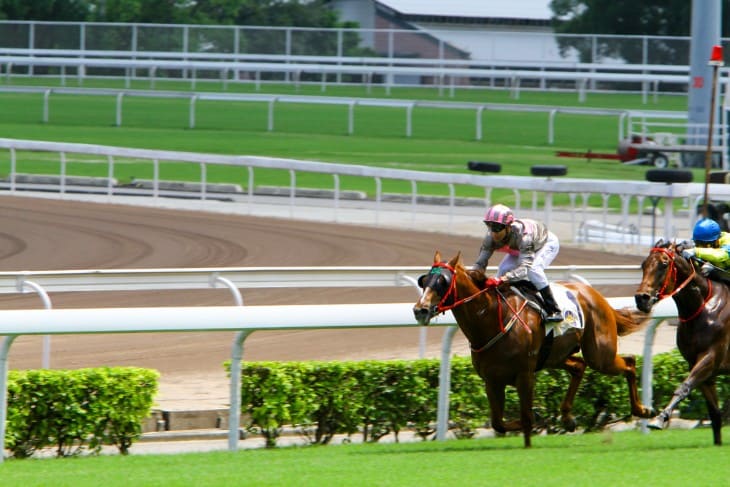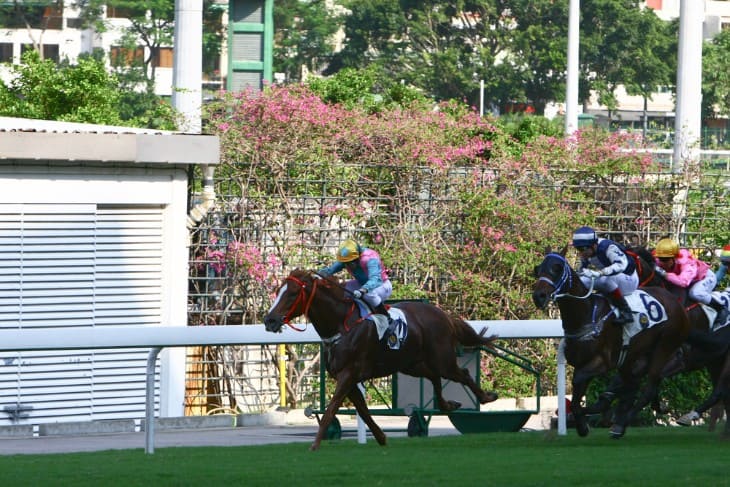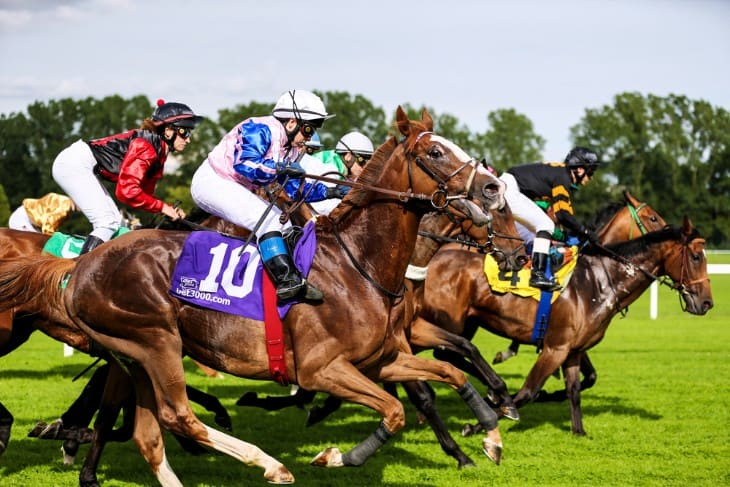- The Development Stages of Two-Year-Old Racehorses
- Training Regimens for Young Thoroughbreds
- The Role of Genetics in Shaping a Racehorse's Abilities
- Nutrition and Health Management for Optimal Performance
- The Psychology of Young Horses in Competitive Settings
- Track Surfaces and Their Impact on Two-Year-Olds
- The Significance of Jockey and Horse Synergy
- Analyzing Past Performances: Key Indicators of Success
- Conclusion
Nursery handicaps are a crucial aspect of horse racing, particularly for two-year-old thoroughbreds. These races are exclusively for two-year-old horses and are designed to level the playing field by allocating weights based on each horse's past performances. The primary objective of nursery handicaps is to give each young racehorse an equal opportunity to win, regardless of their individual development stages or past achievements. This form of racing tests not only the raw speed and stamina of these young horses but also their ability to cope with competitive pressure.
In the realm of horse racing, nursery handicaps are often seen as a stepping stone towards more prestigious races. They offer trainers and owners a chance to gauge the potential of their horses against similarly aged competitors. The handicapping system is meticulously calculated. The handicapper assigns weights based on factors like past race results and perceived potential. As such, these races provide invaluable insights into the future prospects of two-year-old thoroughbreds in the racing industry.
The Development Stages of Two-Year-Old Racehorses
The development stages of two-year-old racehorses are integral to their performance in nursery handicaps. At this age, horses are still growing and developing both physically and mentally. It's a period marked by significant changes, where each month can see notable advancements in strength, speed, and temperament. The training and nurturing provided during this time are crucial in shaping a horse's future racing abilities.
Physical development in two-year-old thoroughbreds involves both muscle growth and skeletal maturation. These young horses develop rapidly, but their bones and joints are still forming, making them susceptible to injuries if overworked. Trainers must strike a delicate balance between conditioning and rest to ensure optimal growth without risking injury. Mental development is equally important. Young racehorses are introduced to the racing environment, including the sights, sounds, and experiences of a race day. This acclimatisation is vital for their psychological readiness, ensuring they can handle the stress and excitement of competitive racing.
Training Regimens for Young Thoroughbreds
Training regimens for young thoroughbreds, especially those competing in Nursery Handicaps, are tailored to nurture their physical and mental capabilities. A structured training programme is essential for these young horses, as it builds their strength, endurance, and racing skills. The training is progressive, starting with basic conditioning and gradually introducing more complex exercises as the horse develops. The key is to enhance the horse's natural abilities while ensuring their wellbeing and readiness for competitive racing.
Key elements of the training regimen include:
- Conditioning: Basic exercises to build muscle strength and cardiovascular fitness.
- Speed Work: Short bursts of high-speed running to develop sprinting capabilities.
- Endurance Training: Longer, slower runs to build stamina.
- Mental Training: Exposure to racing environments to improve focus and adaptability.
The trainers must also pay close attention to the horse's response to training, adjusting the regimen as needed to avoid overexertion or injury. Monitoring the horse's health, behaviour, and performance provides insights into their individual needs and potential.

The Role of Genetics in Shaping a Racehorse's Abilities
Genetics play a pivotal role in shaping a racehorse's abilities, particularly in the context of Nursery Handicaps. The genetic makeup of a horse determines its potential for speed, stamina, and physical prowess, which are critical factors in their racing performance. Breeding programmes are often designed to combine desirable traits from both sire (father) and dam (mother) to produce offspring with superior racing abilities.
The genetic attributes important for racehorses include:
- Speed: The ability to achieve and sustain high speeds.
- Stamina: Endurance to maintain performance over various distances.
- Physical Build: Muscular and skeletal structures conducive to racing.
- Temperament: Mental attributes like focus, competitiveness, and adaptability.
However, it's important to note that while genetics provide a foundation, they are not the sole determinant of a racehorse's success. Training, environment, and individual care also play significant roles in developing a young horse's potential. The combination of superior genetics and effective training regimes maximises the chances of success in competitive racing environments such as Nursery Handicaps.
Nutrition and Health Management for Optimal Performance
Nutrition and health management are critical components in preparing young thoroughbreds for Nursery Handicaps. A well-balanced diet, tailored to the needs of growing racehorses, is essential for their physical development, energy levels, and overall health. Nutritional requirements vary depending on the stage of development and training intensity. The diet typically includes a balanced mix of grains, hay, and supplements to ensure adequate intake of carbohydrates, proteins, vitamins, and minerals.
Key aspects of nutrition and health management include:
- Dietary Balance: Ensuring a proper mix of carbohydrates, proteins, and fats.
- Hydration: Maintaining adequate water intake to support metabolism and health.
- Supplements: Adding vitamins and minerals to address any dietary deficiencies.
- Health Monitoring: Regular check-ups and interventions for any health issues.
In addition to nutrition, comprehensive health management is vital. This includes regular veterinary check-ups, vaccinations, and prompt treatment of any injuries or illnesses. Monitoring the horse's health helps in early detection of issues, which is crucial for the demanding physical exertion required in Nursery Handicaps.
The Psychology of Young Horses in Competitive Settings
The psychology of young horses in competitive settings, such as Nursery Handicaps, plays a significant role in their racing performance. Young thoroughbreds, being in the early stages of their training, can exhibit a range of behaviours and reactions to the racing environment. Understanding and managing these psychological aspects is crucial for their development as successful racehorses.
The psychological training of young horses includes:
- Familiarisation: Acclimatising horses to the racing environment, including crowds, noise, and the starting gates.
- Behavioural Training: Managing anxiety and excitement to maintain focus during races.
- Confidence Building: Gradual exposure to racing situations to build confidence and adaptability.
Trainers and handlers work closely with young thoroughbreds to develop their mental resilience and focus. This involves not only training them for the physical aspects of racing but also preparing them mentally to handle the pressures and stimuli of a competitive race day. Proper psychological preparation ensures that the horses remain calm, focused, and ready to perform at their best in the challenging environment of Nursery Handicaps.
Track Surfaces and Their Impact on Two-Year-Olds
The type of track surface is a significant factor affecting the performance of two-year-old racehorses in Nursery Handicaps. Different track surfaces, such as turf, dirt, or synthetic, can influence how a horse runs, its speed, and the risk of injury. Each surface has unique characteristics that trainers and handlers must consider when preparing young horses for races.
Key considerations regarding track surfaces include:
- Turf: Often softer and can be more forgiving on young legs but requires a different running style.
- Dirt: Harder and faster, it may be more challenging for young horses to maintain footing.
- Synthetic: Designed to mimic turf, but with more consistency in different weather conditions.
- Adaptation Training: Preparing horses to perform optimally on different surfaces.
Understanding and adapting to these surfaces is crucial for the training of young thoroughbreds. Trainers often adjust workouts and conditioning routines to prepare horses for the specific challenges of each surface. This approach not only enhances performance but also helps in reducing the risk of injuries, which is particularly important for the still-developing two-year-olds competing in Nursery Handicaps.

The Significance of Jockey and Horse Synergy
The synergy between a jockey and a horse is a vital component in the world of Nursery Handicaps. This relationship can significantly influence a young horse's performance and ability to handle the pressures of a race. A good jockey understands the unique temperament and capabilities of their horse, enabling them to make strategic decisions during the race to maximise performance.
The elements of a strong jockey-horse partnership include:
- Communication: A jockey's ability to read and respond to a horse's behaviour and signals during a race.
- Trust: Building a bond where the horse feels confident and secure with the jockey.
- Strategy: The jockey's skill in planning and executing race tactics based on the horse's strengths and the race conditions.
This partnership is cultivated through training and experience. Jockeys spend considerable time with their horses, getting to know them and building a rapport. This connection is especially important for young horses in Nursery Handicaps, as they are still gaining experience and confidence in racing scenarios. A strong jockey-horse synergy can be the deciding factor in the highly competitive environment of nursery races.
Analyzing Past Performances: Key Indicators of Success
Analyzing the past performances of two-year-old racehorses is critical in assessing their potential in Nursery Handicaps. This analysis provides valuable insights into a horse's capabilities, strengths, and areas needing improvement. By examining previous races, trainers and owners can gauge a horse's development, adaptability to different track conditions, and response to competitive pressure.
Key indicators to consider in past performances include:
- Race Finishes: Positions and timings in previous races, indicating speed and consistency.
- Behavioural Patterns: Reactions under race conditions, showing mental preparedness and adaptability.
- Recovery Post-Race: How quickly a horse recovers after a race, indicating stamina and physical condition.
Understanding these indicators helps in making informed decisions about training strategies and race entries. It also allows for the identification of suitable races for the horse, maximizing its chances of success. The data gathered from past performances is invaluable in the competitive realm of Nursery Handicaps, where every small advantage can be a deciding factor.
Conclusion
In conclusion, the realm of Nursery Handicaps presents a complex and fascinating aspect of thoroughbred racing. It encapsulates the intricate balance between training, genetics, psychology, and economic considerations in shaping the careers of young racehorses. These races not only test the physical and mental capabilities of two-year-old thoroughbreds but also reflect the efforts of trainers, owners, and jockeys in preparing these young athletes for the rigours of competitive racing.
For more information:







